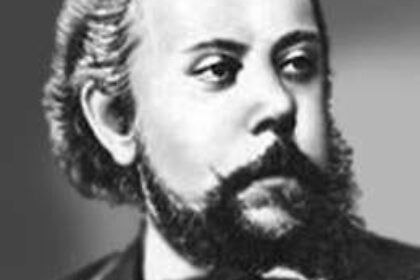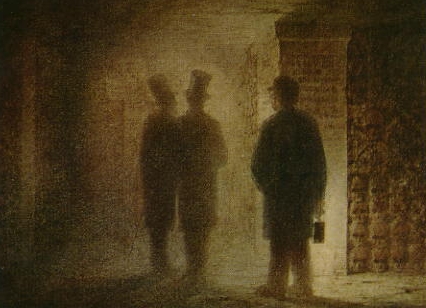Music History: Chasing Modest Mussorgsky

Modest Mussorgsky 1839-1881
A writing sample from our approach to music history.
In 1856, a gang of five self-taught Russian composers met to create a new type of classical music, free from the rules of Germany. Lead by Modest Mussorgsky, they composed Russian music for Russian people, drawn from peasant melodies, folklore witches, and patriotic passion. Most of their musical movement failed. Mussorgsky hadn’t been able to hold a job, pay his rent, or finish most of the pieces he started. After his mother’s death, he drank in binges for 15 years, ending with his death at 42.
40 years after he died, there was one curious piano piece of his that still fascinated composers around the world. The melodies, chords, and logic of this piece were different. Mussorgsky had left a strange musical tribute to his friend. Each piece described a painting of his patriotic Russian friend Viktor Hartmann, an artist, who had died at 39. In the score, Mussorgsky had scribbled a strange message: Cum mortuis in lingua
Pictures at an Exhibition
Modest Mussorgsky wrote Pictures at an Exhibition as an imagined journey through a museum featuring the paintings of his friend, Viktor Hartmann. In 1874, Mussorgsky and Hartmann, like other Russian artists, were seeking a national identity through the arts. The 13 compositions in Pictures at an Exhibition describe ten of Hartmann’s paintings, and three Promenades or walks through the hallway between rooms in the imaginary museum. Six of Hartmann’s paintings survive today. Mussorgsky originally wrote the 13 pieces for piano, but it is famous as an orchestral piece. Mussorgsky never arranged the piece for orchestra, but several composers have created very different results by orchestrating Mussorgsky’s Pictures. The difference in orchestration dramatically changes the music. French composer Maurice Ravel wrote the most famous orchestration.
Click the “Try Our Quiz” button above to explore Mussorgsky’s “Gnomus.”



